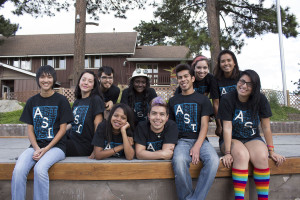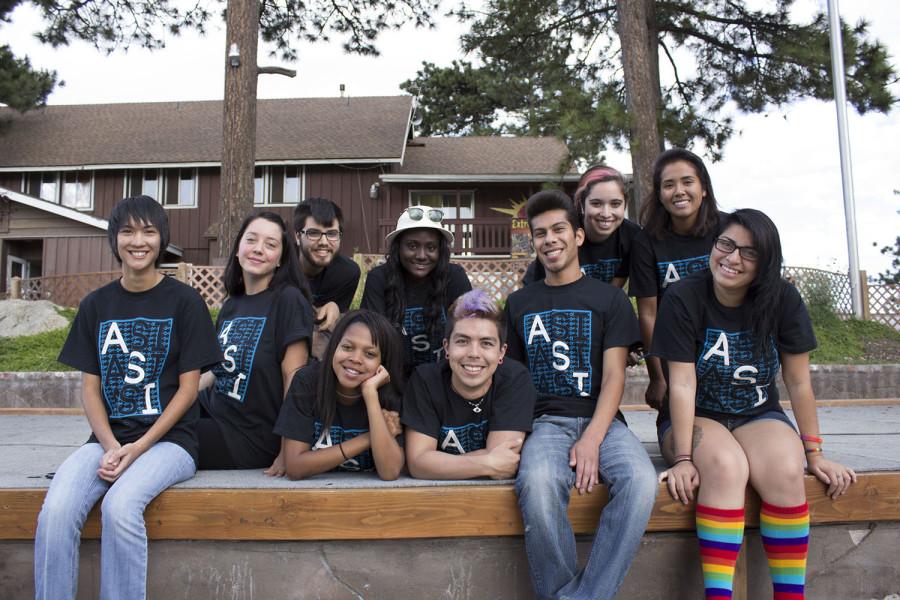
By Katlin Sweeney
Editor in Chief
When you give passionate leaders a place where they can share their thoughts and initiate their dreams into action, you spark a revolution.
At CSUSM, students, faculty and staff have worked together to create a campus that is not only serving students in the classroom, but through various educational programs as well.
The development of programs and spaces dedicated to the exploration and understanding of social justice has been at the forefront of the university’s mission to build a diverse campus. One of the most successful routes towards educating students has been through the Social Justice Centers. Individually known as the Gender Equity Center, Pride Center and Cross Cultural Center, these three spaces have been pivotal in creating student leaders and promoting awareness of significant social issues.
While Student Life & Leadership (SLL) oversees the Cross Cultural Center, the Gender Equity Center and Pride Center are provided through Associated Students Inc. (ASI). The common misconception in the past has been that all three centers were through either SLL or ASI, due to their location and umbrella term of Social Justice Centers. While they all share similar goals, each of the Social Justice Centers is its own entity, equipped with different student employees, identities and goals.
In an effort to represent themselves as ASI organizations and highlight the changes to their structure the Gender Equity Center and Pride Center have rebranded themselves as the ASI Community Centers. The two groups, which previously operated under the leadership of two separate program directors, have refocused so that the they function more as a team rather than completely separate from one another.
The Pride Center and Gender Equity Center are now under the leadership of Robert Aiello-Hauser, director of ASI Community Centers, and Kenyatta Parker, coordinator of ASI Community Centers. The goal in combining the two centers under one title is not to extinguish the separate identities of each center, but rather to encourage students from both groups to work together. The title ASI Community Centers will be used to refer simultaneously to both centers, but the Gender Equity and Pride Centers will still keep their individual names to highlight their differences in priorities and means of outreach.
“Things are going to be bigger and better this year. The more we give, the more students will follow their dreams,” Aiello-Hauser said.
One of the reasons that the Gender Equity and Pride Centers have teamed up is to refocus their images and encourage students from all backgrounds to explore what each group has to offer. The Pride Center is not geared only towards LGBTQA students and the Gender Equity Center is not solely for students that identify as feminists or seek to combat injustice.
By changing their title to highlight ‘community,’ Aiello-Hauser hopes that it will make all students feel more comfortable to walk in, open up to their peers and faculty, ask questions, and learn about all sides and opinions of social justice.
With a conjoining door that makes it easy for students to walk in between the two, the ASI Community Centers students that are interested in both centers can easily walk next door to explore both options. Aiello-Hauser expressed that each student that walks into the centers are at different phases of their journey, and that his job is to encourage them to explore and learn as much as they can.
“Everyone’s path may be different, and yours may not be the same as mine. We are just supporting and offering as many paths and opportunities to grow in understanding of social justice as possible,” Aiello-Hauser said.
The ASI Community Centers have also integrated in various other organizations to their projects, partnering up notably with the Greek Leadership Council and Student Health and Counseling Services. Their goal is to create an environment that is not only inclusive of the students that spend time in the Community Centers but also to connect the campus as a whole so that CSUSM functions as one unit rather than a collection of groups separate from one another.


